To create powerful herbal teas using adaptogens, it's crucial to find the right ratios. A common mix for stress reduction is 2 parts ashwagandha to 1 part rhodiola. For an uplifting brew, try equal parts holy basil and ginseng. Aim for 5 to 10 grams of adaptogens per cup. Remember, everyone's body responds differently, so don't hesitate to adjust these ratios to suit your needs. Start with high-quality herbs, and pay attention to how different blends make you feel. There's a lot more on optimizing your tea experience waiting for you to explore.
Understanding Adaptogens
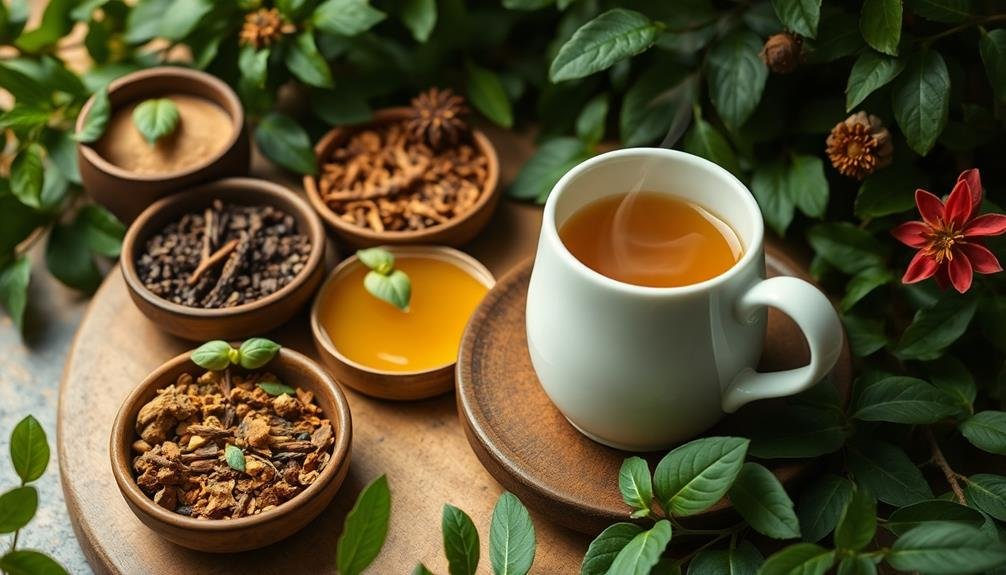
Adaptogens are a unique group of herbs that help your body adapt to stress and promote balance. They've been used for centuries in traditional medicine, and they work by modulating your body's response to physical, emotional, or environmental stressors.
When you incorporate adaptogens into your routine, you're fundamentally giving your body the tools it needs to maintain equilibrium amid life's challenges.
These herbs can enhance your resilience, improve your energy levels, and even support your immune system. Unlike stimulants that might give you a quick boost, adaptogens promote a more sustainable approach to energy and well-being.
You might find that, over time, you handle stressors more effectively and feel more grounded in your daily life.
Using adaptogens in herbal teas is a simple and enjoyable way to reap their benefits. When you brew a cup, you're not just sipping a warm beverage; you're nurturing your body and mind.
Key Adaptogen Varieties
Exploring the world of adaptogens reveals several key varieties that each offer unique benefits.
One popular choice is Ashwagandha, known for its stress-relieving properties. It can help stabilize your mood and boost energy levels, making it a fantastic addition to your daily routine.
If you're seeking enhanced focus, Rhodiola Rosea might be your go-to. This adaptogen supports mental clarity and combats fatigue, helping you stay sharp during long days.
Another significant variety is Holy Basil, or Tulsi, which promotes a sense of calm while also supporting your immune system. It's perfect for those hectic days when you need a moment of peace.
Then there's Schisandra, celebrated for its ability to support liver health and increase resilience to stress. Adding this to your herbal tea can be a game-changer for your overall well-being.
Blending Ratios for Effectiveness
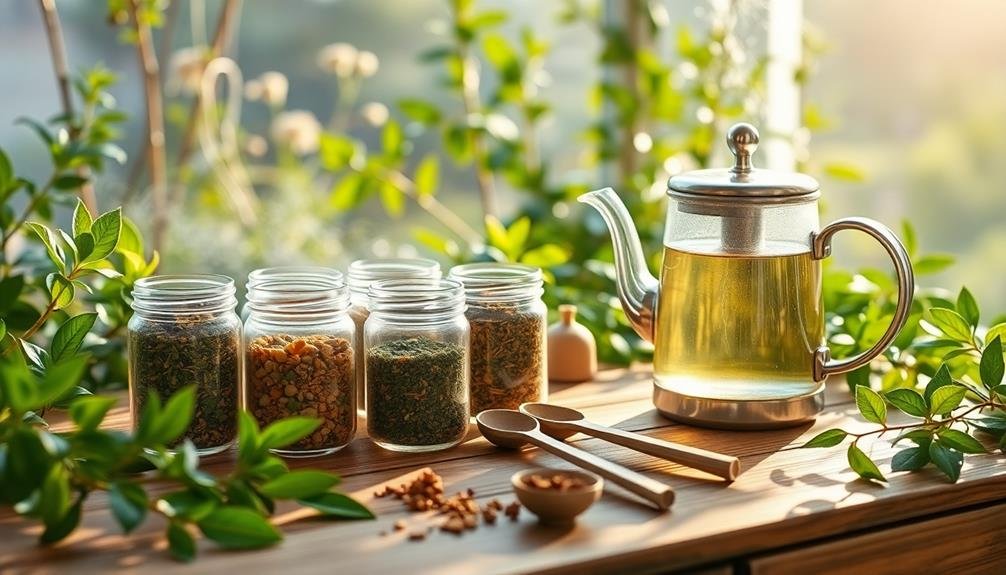
Finding the right blending ratios for adaptogens in your herbal teas can greatly enhance their effectiveness. Start by considering the specific benefits you want from your brew. For example, if you're looking to reduce stress, a common ratio is 2 parts ashwagandha to 1 part rhodiola. This combination leverages ashwagandha's calming properties while rhodiola contributes to resilience against stress.
You might also experiment with a 1:1 ratio of holy basil and ginseng for an uplifting and energizing effect. This balanced blend can help you feel rejuvenated without overwhelming your system.
It's important to remember that everyone's body responds differently, so don't hesitate to tweak these ratios based on your preferences and needs.
To maximize the benefits, keep the total weight of the blend in mind. A total of 5 to 10 grams of adaptogens per cup is a good starting point. As you gain experience, you'll discover which ratios resonate best with you.
Keep a journal to track your blends and how they make you feel, allowing you to refine your herbal tea recipes over time. Enjoy the journey toward finding your perfect adaptogen blend!
Techniques for Herbal Tea Preparation
When preparing herbal teas with adaptogens, it's essential to start with the right technique to maximize their benefits.
Begin by selecting high-quality herbs, as their potency directly affects your tea's effectiveness. Measure out your adaptogens and other herbs according to your desired ratios, focusing on creating a balanced blend that suits your needs.
Next, use a proper steeping method. For most adaptogens, steeping in hot water for 5 to 15 minutes will allow the beneficial compounds to infuse fully. Remember, the longer you steep, the stronger the flavor and effects will be.
Lastly, consider the water temperature. Different herbs have specific temperature requirements for ideal extraction. Generally, boiling water works well for tougher roots, while more delicate herbs benefit from slightly cooler water.
- Feel the warmth of the tea cradle your hands, wrapping you in comfort.
- Let the fragrant steam transport you to a peaceful place, calming your mind.
- Experience the gentle energy rising within you, revitalizing your spirit.
Customizing Your Herbal Tea Blend
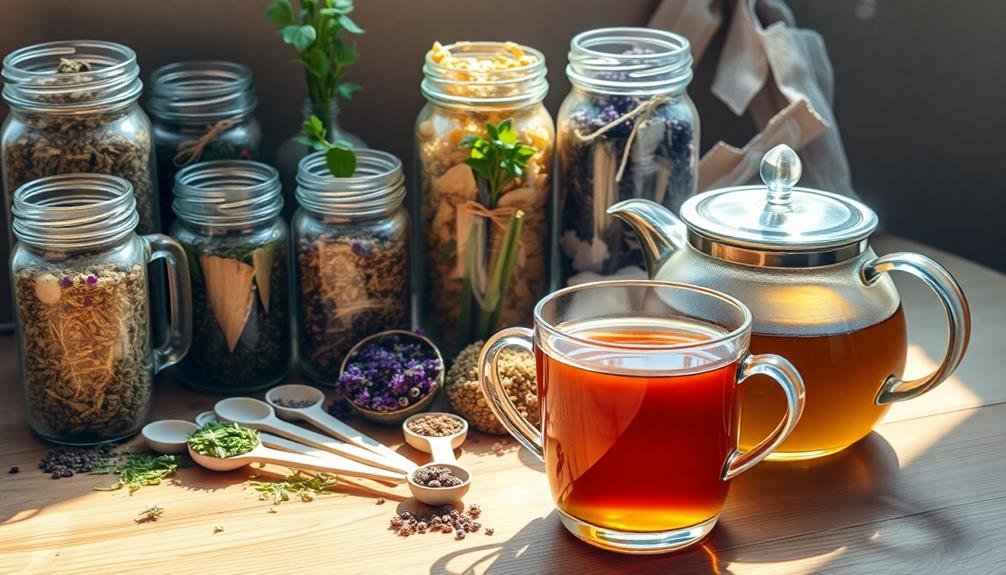
Customizing your herbal tea blend is a rewarding way to tailor flavors and benefits to your specific needs. Start by selecting base herbs that resonate with you, like chamomile for relaxation or ginger for warmth.
Next, consider your goal: do you want to boost energy, reduce stress, or enhance immunity? Choose adaptogens like ashwagandha for stress relief or rhodiola for energy enhancement.
Once you've picked your herbs, think about the flavor profile. You can balance earthy notes with citrusy or floral elements. For example, pairing holy basil with lemon balm can create a revitalizing blend.
Don't forget to experiment with proportions—start with a 2:1 ratio of base herb to adaptogen, then adjust as your palate dictates.
When blending, take notes on your ratios and the effects you feel, so you can refine your recipe. Also, consider adding a touch of sweetness with honey or a splash of lemon to enhance flavor.
Frequently Asked Questions
Can Adaptogens Interact With Prescription Medications?
Yes, adaptogens can interact with prescription medications. It's essential to consult your healthcare provider before combining them, as they might affect how your body metabolizes the medications, potentially altering their effectiveness or causing unwanted side effects.
How Long Does It Take to Feel the Effects of Adaptogens?
You might notice the effects of adaptogens within a few days to a couple of weeks, depending on your body and the specific adaptogen. Consistency in use plays a key role in experiencing their benefits.
Are There Any Side Effects Associated With Adaptogens?
Yes, there can be side effects with adaptogens. You might experience digestive issues, headaches, or allergic reactions. It's crucial to start with small doses and consult a healthcare professional if you have concerns.
Can I Use Adaptogens During Pregnancy or Breastfeeding?
You should consult your healthcare provider before using adaptogens during pregnancy or breastfeeding. Safety varies for each individual, and it's essential to guarantee that any herbal supplements won't negatively impact you or your baby's health.
How Should I Store Adaptogens for Maximum Potency?
To store adaptogens for maximum potency, keep them in a cool, dark place, away from moisture and sunlight. Use airtight containers to maintain freshness, and check expiration dates regularly to verify their effectiveness.
In Summary
Incorporating adaptogens into your herbal tea can enhance your well-being and boost your resilience to stress. By understanding the key varieties and their ideal blending ratios, you can create personalized blends that suit your needs. Experimenting with different preparation techniques will help you access the full potential of these powerful herbs. So, grab your favorite adaptogens, mix them up, and enjoy the journey of crafting your perfect cup of herbal tea!

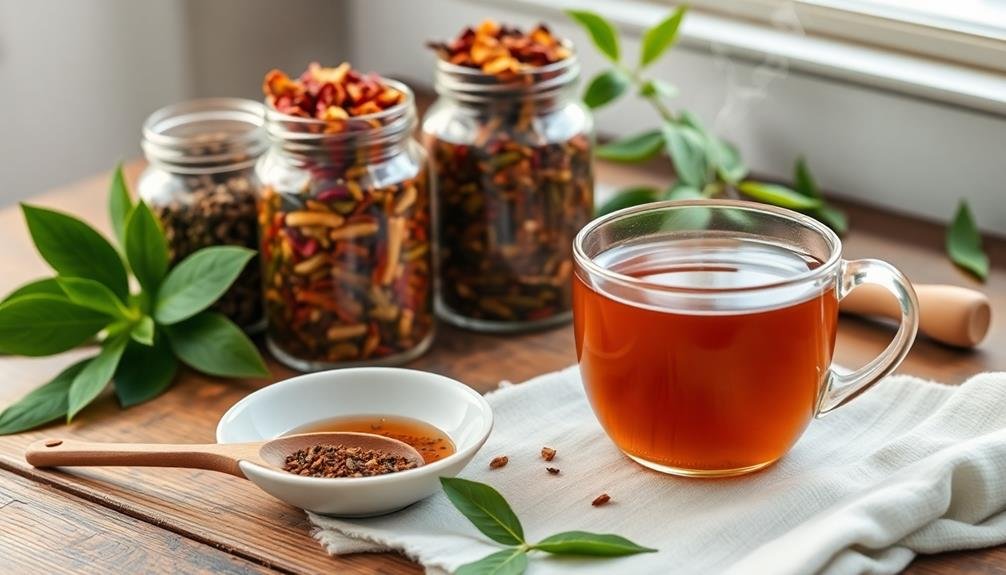
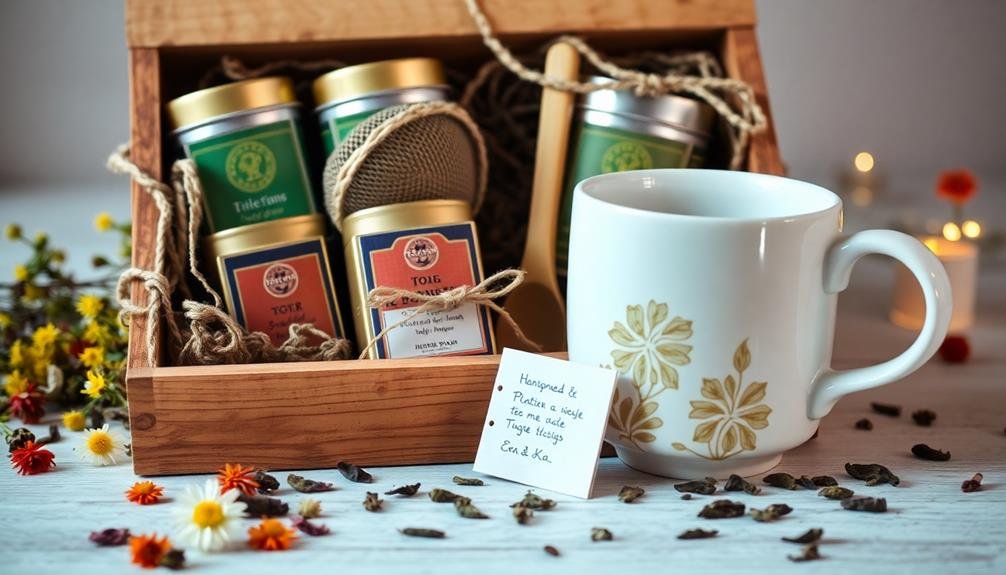
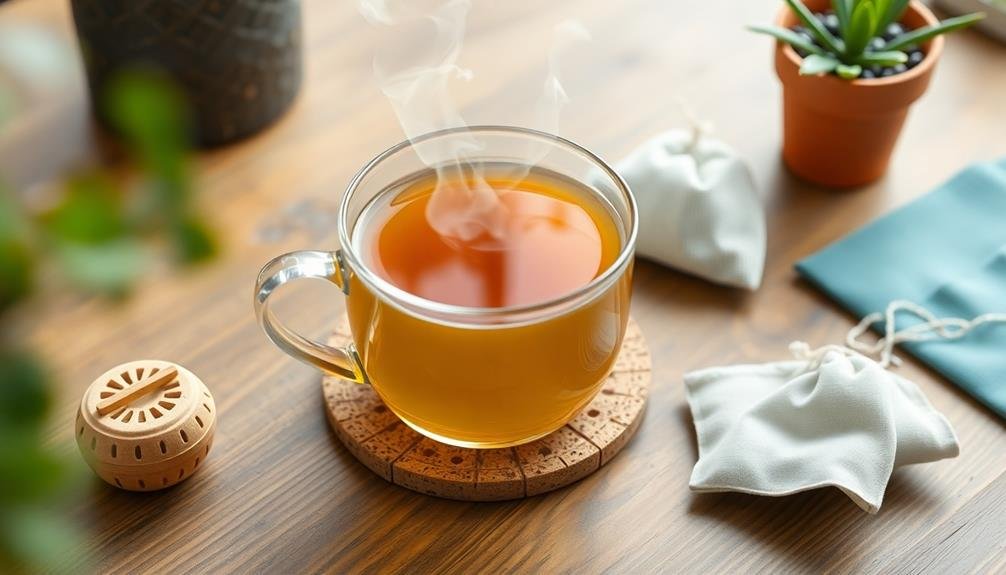
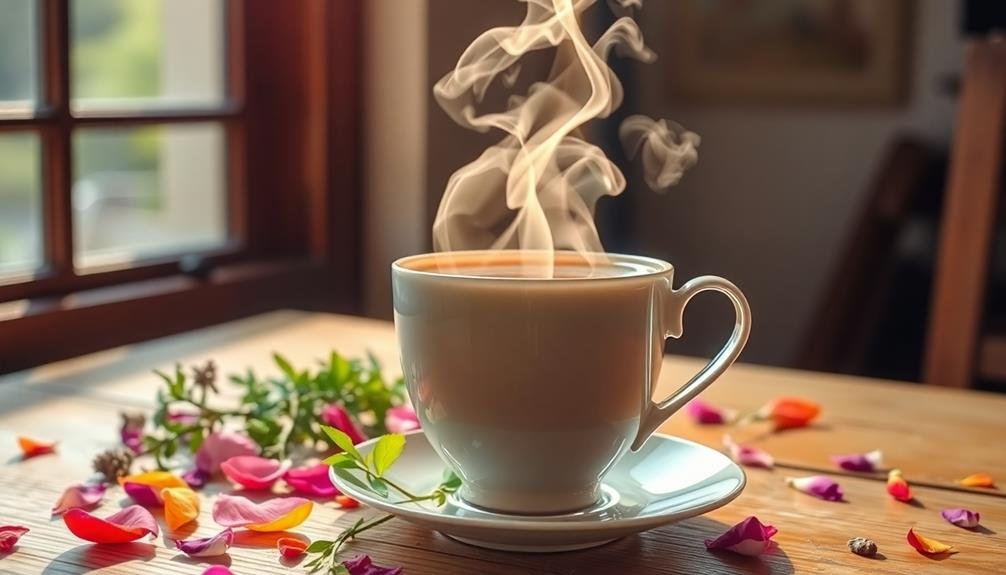
Leave a Reply